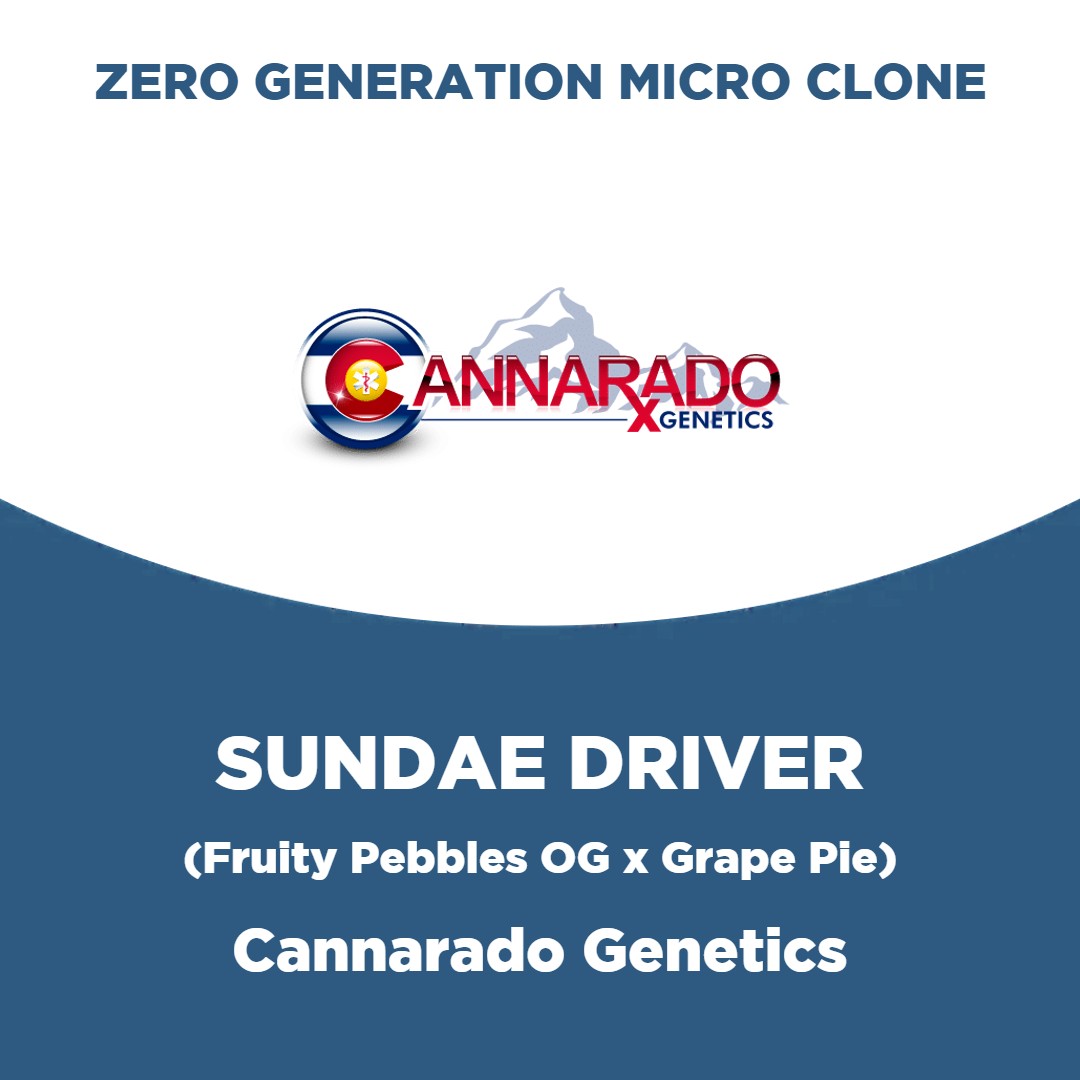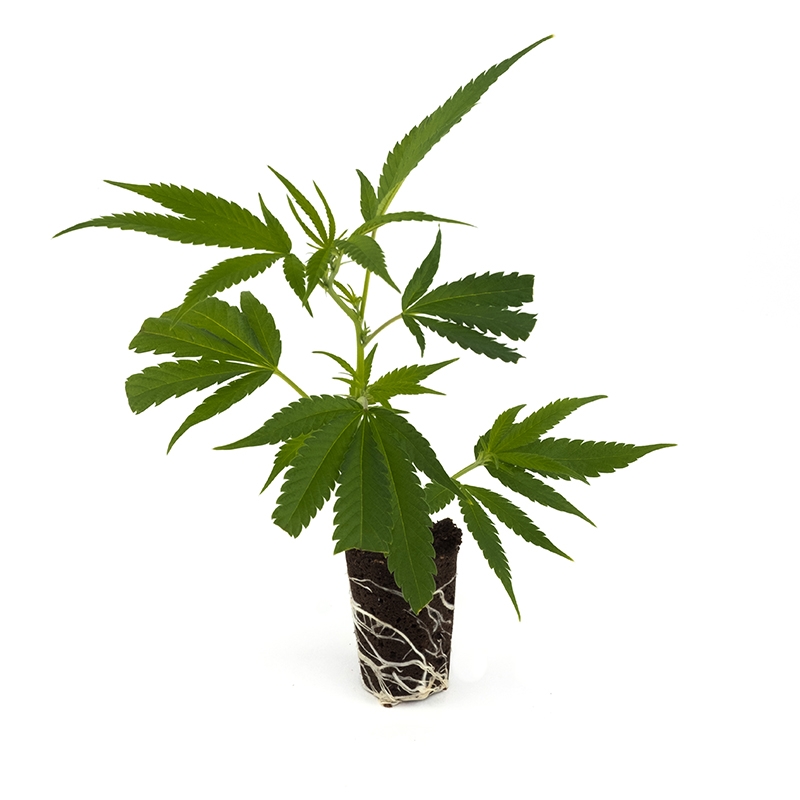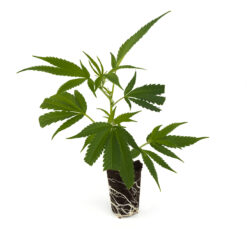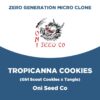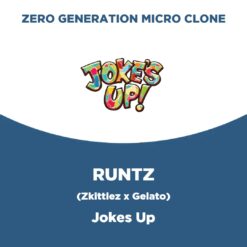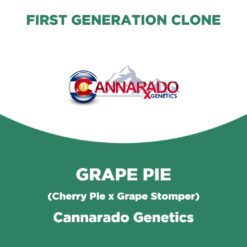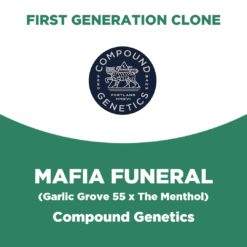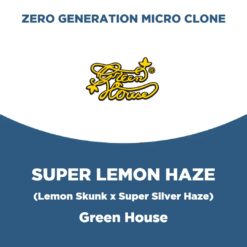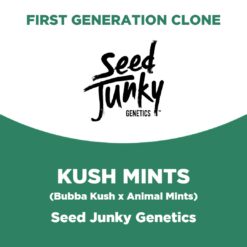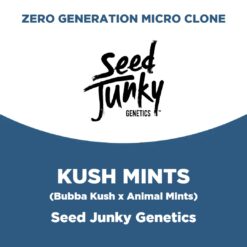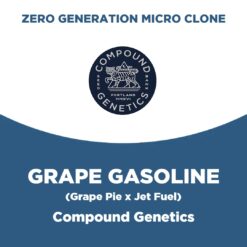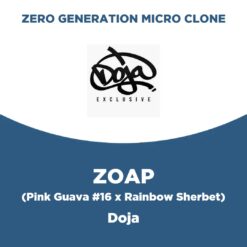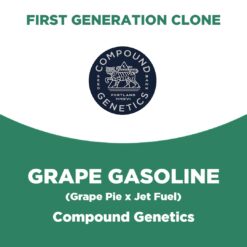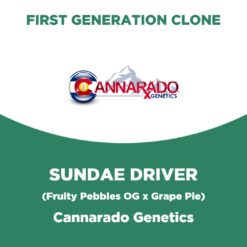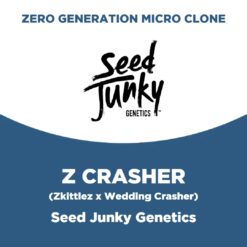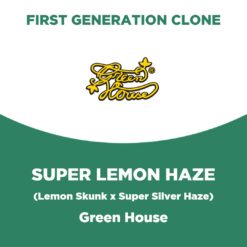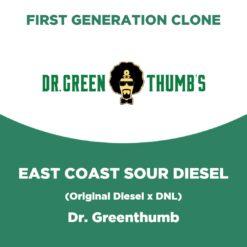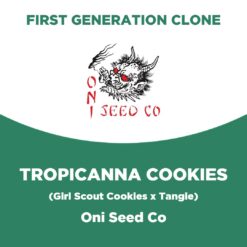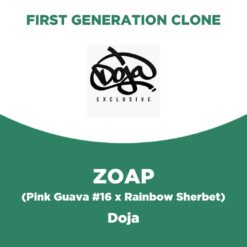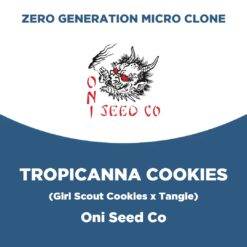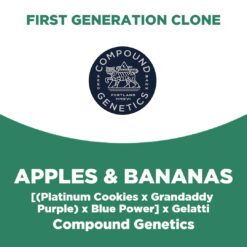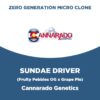Sundae Driver | Cannarado Genetics | Zero Generation Micro Clone
From €25,00 iva inclusa
Sundae Driver | Cannarado Genetics | Zero Generation Micro Clone
Sundae Driver is a hybrid cannabis strain bred by Cannarado Genetics and commercialized by Jungle Boys. Breeding and growing cannabis since 1998, the founder of Cannarado Genetics first started making a name for himself and his brand in 2009–2010 after joining the conversation on cannabis forums like THC Farmer and IC Mag. Today, Cannarado Genetics is highly regarded for creating an ever growing catalogue of strains with great terps and high THC levels, many of which are readily available in seed form from the breeder’s website.
Ever since founding Cannarado Genetics, its founder has been predominantly focused on creating feminized seeds, though he also works with regular seed stock occasionally. Most notably, Cannarado Genetics is known to use elite Colorado strains as well as some clone-only cuts from other parts of the world, including Sour Dubble, Jack Herer, Lemon G, The White, Thin Mint Cookies, and Grape Pie, as well as select OG varieties. Cannarado has also openly expressed his appreciation for old Dutch cannabis varieties and said he is going to try and evoke some old 90s Dutch strains.
Cannarado Genetics is one of several breeders working with Jungle Boys. After creating and stabilizing Sundae Driver in 2018, Cannarado sent the strain to Jungle Boys, who hunted down its phenotypes and started commercializing the strain to make it the highly sought-after hybrid it is today.
Characteristic:
- Indica / Sativa: 80%-20%
- Days: 60/70
- Cross: Fruity Pebbles OG x Grape Pie
Attention: the availability of our clones is subject to variations during the year, to be guided in your purchase write to us at info@greencountry.biz before confirming the order, we will send you the updated list with the available genetics. Thank you!
Sundae Driver | Cannarado Genetics | Zero Generation Micro Clone
Sundae Driver is a well-balanced hybrid strain bred from a cross of Fruity Pebbles OG and Grape Pie. Learn more about these strains, their traits and their genetics below.
Fruity Pebbles OG, also known simply as Fruity Pebbles or FPOG, was bred by Alien Genetics from a combination of Green Ribbon, Granddaddy Purple, and Tahoe Alien genetics. The result is a sweet and fruity strain with some underlying creamy aromatic notes, reminiscent of the smell of a big bowl of sugary fruit-flavored cereal (like the one the strain is named after). FPOG is supposedly slightly indica-dominant, has a big, bushy Kush-like structure, and produces dense flowers with stacks of bulging calyxes. Its effects are euphoric and uplifting, with an underlying body buzz that may produce sedation in some users.
Grape Pie, Sundae Driver’s second parent, is another indica-leaning hybrid. Bred by Cannarado genetics, the strain combines genetics from Cherry Pie (bred by Powerzzzup founder Kenny Dumetz) and Grape Stomper by Gage Green Group. Grape Pie is a classic purple hybrid with delicious aromas of grape candy and gas. Its effects are hard-hitting, typically producing a rush of initial euphoria followed by a long-lasting, lazy physical stone ideal for kicking up your feet and relaxing in front of the TV. Grape Pie typically produces thick, pine tree-shaped flowers with a stunning mix of bright green and purple hues.
Sundae Driver has preserved a lot of great traits from its parents, including the tight bud structure of FPOG and the beautiful colours of Grape Pie. Its aroma is sweet and creamy, with strong notes of vanilla bean, ripe berries, and grape gas—making it reminiscent of both its parent strains. Its effects, however, are reportedly well-balanced and tolerated by many smokers.
The original Sundae Driver by Cannarado Genetics and Jungle Boys was made available to growers as a limited edition clone drop. These plants are stocky and bushy, with a strong central stem and solid branches. They produce dark green leaves of a fairly standard size and shape.
In general, Sundae Driver by Cannarado/Jungle Boys is a short-to-medium strain, depending on how it is grown. During bloom, it produces thick, dense flowers with a typical indica-shape, big swollen calyxes, and beautiful colours ranging from grassy green to light violet.
What To Do When You Receive Your Clones of Sundae Driver?
1. TRANSPLANT
We highly recommend transplanting into the soil or medium that suits your system as soon as you receive your clones. If necessary, they can remain in their “Blisters” for a day or two without allowing the Rockwool/RootRiot to dry out.
We recommend transplanting clones into a 1.5-2 liter pot so that they can form a solid root and sturdier plant structure before being placed in their final pot. Immediately transplanting them into a pot that is too large can cause root rot to develop and slow or hinder the growth of your plant. This will help harden them off and establish themselves before they are transplanted into their final pot.
2. ACCLIMATATION
Acclimating clones to their new environmental conditions is essential to growing a healthy plant and having a successful cycle. While at the nursery, the clones are kept under a 24-hour light cycle. We recommend keeping them on at least an 18/6 light cycle (18 hours light and 6 hours dark) after receiving them. While in the cloning facility, they are kept at 21-24 degrees Celsius and a relative humidity of 69-75%. A slight decrease in temperature and humidity can be accomplished within a week to allow your clones to adapt to your grow room environment.
Acclimating clones to non-direct light is essential to avoid stress. Full intensity of sun or lamps can damage a younger clone/plant, so you will need to decrease the light intensity. The best way to do this is to use a greenhouse, physically move them in and out of the structure, or place shade netting (30-40%) over them for this adjustment period. The acclimation phase should only take a week or two and should be enough time to remove the shade or be moved out of a greenhouse to full light exposure. Maintaining a constant flow of air on your plants will help harden them to the natural conditions found outside and will help make the stems much stronger overall.
3. IRRIGATION AND NUTRITION
Overwatering clones is a very common mistake. It is essential to give your clones a healthy amount of water, but do not oversaturate them by submerging them. A dry-down period is necessary for clones. To determine the moisture content of the soil when the pot is light, squeeze a small handful of medium and observe if water drips. If no water is coming out, it’s a great time to give them a healthy watering without over saturation. This watering method allows the roots to search the pot for water/nutrients creating a sturdy root ball.
If you have some clones that are still showing stress after transplanting up to three days later, you can give them some water again, but you’ll want to make sure the Rockwool/RootRiot itself is moist. Sometimes, even if the soil is moist, the cube will dry out and water must be applied exclusively to the cube. You need to find a good balance between letting the clones dry out without allowing the foliage to show signs of stress. This can cause health problems for your clones.
Clones can be fed every other day a vegetative feed between 1100-1400 PPM depending on how quickly they are assimilating nutrients (NOTE: each strain is different). How often you need to feed them will depend on the type of growth you have (i.e., inorganic, organic, synthetic, hydro, soil, etc.).
FAQ
WHICH GENETICS ARE AVAILABLE?
Genetics marked as “available” are ready to ship on schedule. Genetics listed “not available” can be pre-ordered by sending us a request to info@greencountry.biz and will generally be available in 15/21 days.
WHAT ARE THE SHIPPING AND DELIVERY TIMES?
If the genetics are marked as “available” shipping times can vary from 2 to 5 working days (to ensure that your clones do not remain stuck in courier warehouses, shipments are made by Wednesday of each week).
HOW ARE CLONES SHIPPED?
We ship our clones in special blisters for transporting the plants.
ARE CLONES FEMINIZED?
Yes, all our clones are taken from female mother plants.
HOW BIG ARE THE PLANTS I WILL RECEIVE?
Our clones have a height that varies from 13cm to 25cm.
HOW DO I KNOW THE CLONES ARE PARASITE-FREE?
Our plants are prepared and grown with strictly controlled practices both in the greenhouse and in the laboratory in environments free of plant parasites. We only use chromotropic traps and predatory insects to defend the cultivation spaces.
WHAT IS THE “RECIPE” THAT MAKES THE CLONES HIGHER LEVEL?
Mother plants are constantly regenerated through tissue culture so you always have fresh clones at peak vigor. Once the clones have been taken from the mother plants, they are left to root in a peat/coconut mixture, supplemented with a mixture containing natural plant hormones, basic micro/macronutrients and vitamins.
DOES TISSUE CULTURE ELIMINATE “GENETIC DRIFT”?
Genetic drift, also known as clonal degradation, is a phenomenon typically caused by a variety of factors that can include poor cultivation practices, stress due to abiotic factors (light, heat, fertigation), or biotic factors such as parasites and microbes. Since tissue culture restores the youthful state of the old, tired mother plant and completely removes parasites and pathogens, clonal degradation becomes highly unlikely.
Prodotti correlati
Talee / Cloni
First Generation Clones
First Generation Clones
First Generation Clones
First Generation Clones
Talee / Cloni
Talee / Cloni
Talee / Cloni
First Generation Clones
First Generation Clones
First Generation Clones
First Generation Clones
Super Lemon Haze | Green House Seeds | First Generation Clone
First Generation Clones
East Coast Sour Diesel | Dr. Greenthumb | First Generation Clone
First Generation Clones
First Generation Clones
First Generation Clones
First Generation Clones
Apples and Bananas | Compound Genetics | First Generation Clone

